On a sunny summer afternoon, artists still paint by the Lieutenant River behind the Florence Griswold House in Old Lyme, Connecticut. This bucolic scene has been a familiar one since the early 1900s, when Florence Griswold’s home and boardinghouse was the center of the Old Lyme Art Colony, a prominent force in American Impressionism during the early 20th century. Today it is a 12-acre museum with period buildings and modern galleries dedicated to preserving and interpreting the area’s artistic heritage and unique landscape for new audiences—and situations. The Krieble Gallery’s exhibition “Social & Solitary: Reflections on Art, Isolation, and Renewal” (June 5 though September 19, 2021) will present historical and contemporary art, indoors and outside, to help viewers think about the changes and challenges created by the Covid-19 pandemic.
The museum’s story begins with Florence Griswold (1850–1937), the daughter of a once-prosperous sea captain who had purchased a majestic Late Georgian house built in 1817. By the late 1890s Miss Florence was on her own, with few options as a woman for supporting herself. She took in boarders, including New York landscape painter Henry Ward Ranger. His 1899 stay and his pleasure in the New England countryside led him to encourage artists to visit Old Lyme. He hoped to establish an art colony like those in France, where innovative artists who favored painting in the open air could gather for work and companionship. Miss Florence proved to be a superb host, creating a relaxed environment that supported creativity. She also displayed art in the house and encouraged potential buyers. More than 200 artists would visit over the decades, and after her death, the house became a museum.
Exploring the Museum
The yellow-painted Florence Griswold House, restored to the 1910 boardinghouse era, is the place to learn about Miss Florence and the Old Lyme Art Colony right where it started. From the art in the wide center hall to a parlor re-created to show where artists relaxed after a day of painting outside, the first-floor rooms convey the colony’s vibrancy. Artists decorated the house’s walls and doors, and the showstopping dining room has 38 painted panels in Tonalist and Impressionist styles. Upstairs rooms display paintings, and the house’s historical exhibits, including photos and films, explore the colony’s beginning and its key artists. Famed artist Childe Hassam’s 1903 stay marked an artistic shift by the colony’s artists toward Impressionism, and the Old Lyme colony became the largest of its kind, known as an “American Giverny.” Other artists who helped develop the colony were Willard Metcalf and William Chadwick. Most were men, but Matilda Browne and other women also participated.
In 2001, the Hartford Steam Boiler Inspection and Insurance Company (HSB) gave 190 American artworks to the museum, a rich legacy focused on artists associated with Connecticut from the late 18th to early 20th century. In 2002, the Florence Griswold Museum opened the Krieble Gallery, gaining 10,000 square feet for exhibitions and visitor services. The airy, modern galleries present thought-provoking shows: the new “Social & Solitary” exhibition explores those themes in relation to the current pandemic, with works that encourage reflection about artists’ practices, companionship and solitude, nature, and struggle and renewal. The art displayed is as varied as Childe Hassam’s Apple Trees in Bloom, Old Lyme (1904) and Mark Dion’s New England Cabinet of Marine Debris (2019), which comments on environmental issues. Recently, the “Expanding Horizons” exhibition examined some of the HSB works utilizing modern critical perspectives such as feminism and African American studies.
Other buildings on-site support the museum’s outreach to the community and its historical emphasis. The barnlike Hartman Education Center, with events and programs for adults and kids year-round, is a performance space and hands-on classroom. Discovery Sundays for families (returning in August) provide a short painting lesson and material for plein-air painting. The museum also offers popular student and youth group field trips (on hold due to the pandemic) that combine history, art, and nature for different ages. Adults can attend events such as music programs and artist talks and classes.
An exhibit in the Rafal Landscape Center, in a 19th-century barn, explores the countryside’s change from rural to suburban use as development increased. The studio of William Chadwick, another historic building moved from a nearby site, allows visitors to see how an American Impressionist worked.
Seeing the Landscape
There would have been no art colony without the Connecticut countryside, and the Griswold property included an orchard, barns, pastures, and riverfront meadows. The early 20th century was a time of rapid industrialization and uneasy social transformation in America, and although the colony’s artists were innovative in style and bohemian in spirit, they favored soothing subjects that recalled an earlier, seemingly more tranquil, time. Miss Florence’s cottage-style garden, now restored and filled with old-fashioned flowers and vegetables she favored, delighted artists, reflecting the popularity of the nostalgic Colonial Revival style.
In a long-term effort, the museum’s landscape, including portions along the Lieutenant River purchased in 2016, is being reinvigorated with sustainable and native plantings that encourage ecological diversity. Opened in 2019, the half-mile Artists’ Trail links museum buildings and landscape sites like a river overlook and woods. One section leads to the Lyme Art Association, an art center and gallery celebrating its centennial this year. The association exhibited works by many art colony painters; Florence Griswold served as the first gallery manager.
The museum is part of both the Connecticut Art Trail, whose members demonstrate the depth of the state’s artistic heritage, and Historic Artists’ Homes and Studios. At the Florence Griswold Museum, the noise from nearby I-95 is a reminder of how much modern life has changed a quiet place. Fortunately, the museum can still inspire visitors with its combination of art, history, and landscape.
Side Dish
An alfresco lunch near the river at the museum’s Café Flo (open May through October; reserve ahead) perfectly completes a visit. The location is lovely, but the fresh, delicious food stands on its own, with options such as seasonal soups, a Mediterranean plate of mezes, lobster BLT on sourdough bread, and a bountiful tuna niçoise salad. Lemon mousse and other desserts round out the menu.
Linda Cabasin is a travel editor and writer who covered the globe at Fodor’s before taking up the freelance life. She’s a contributing editor at Fathom. Follow her on Instagram and Twitter at @lcabasin.

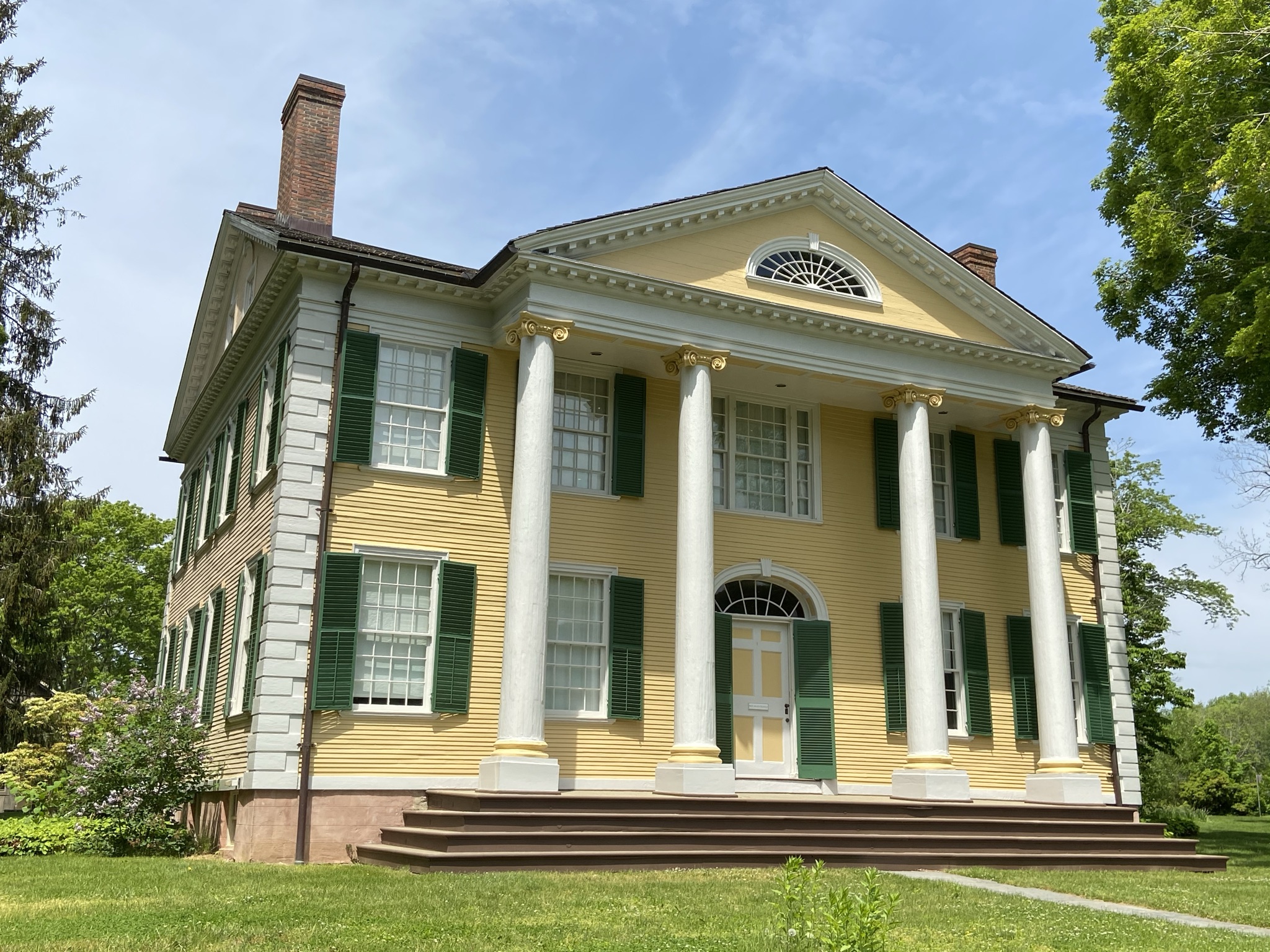
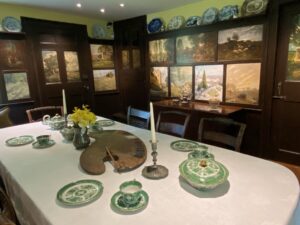
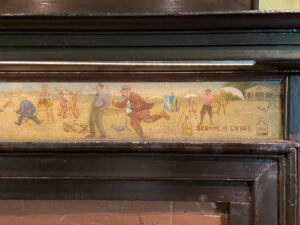
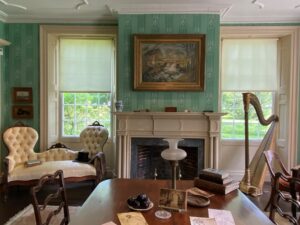
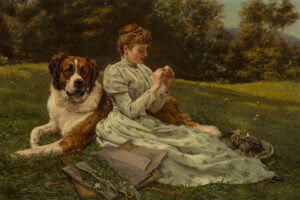
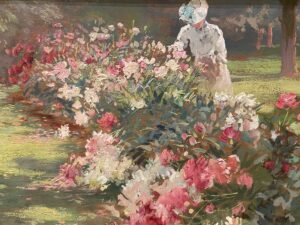
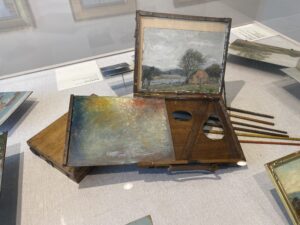
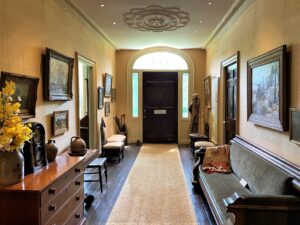
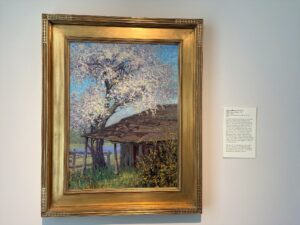
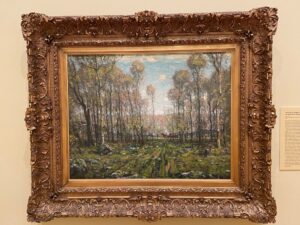
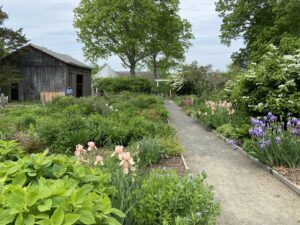
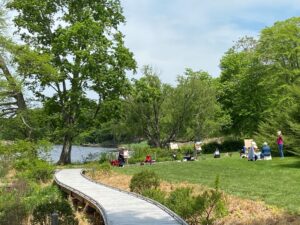
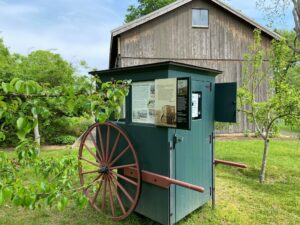
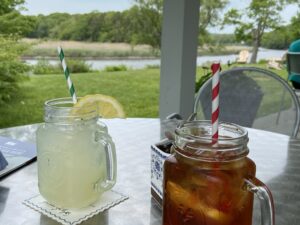
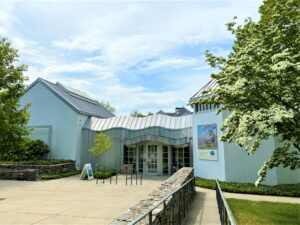
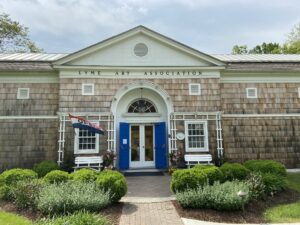
3 Comments